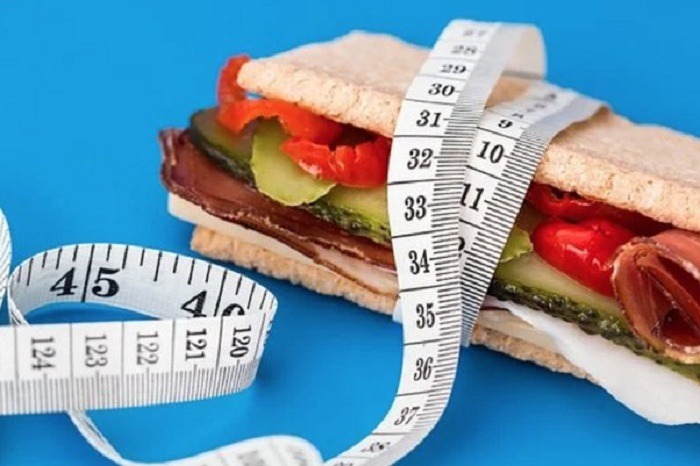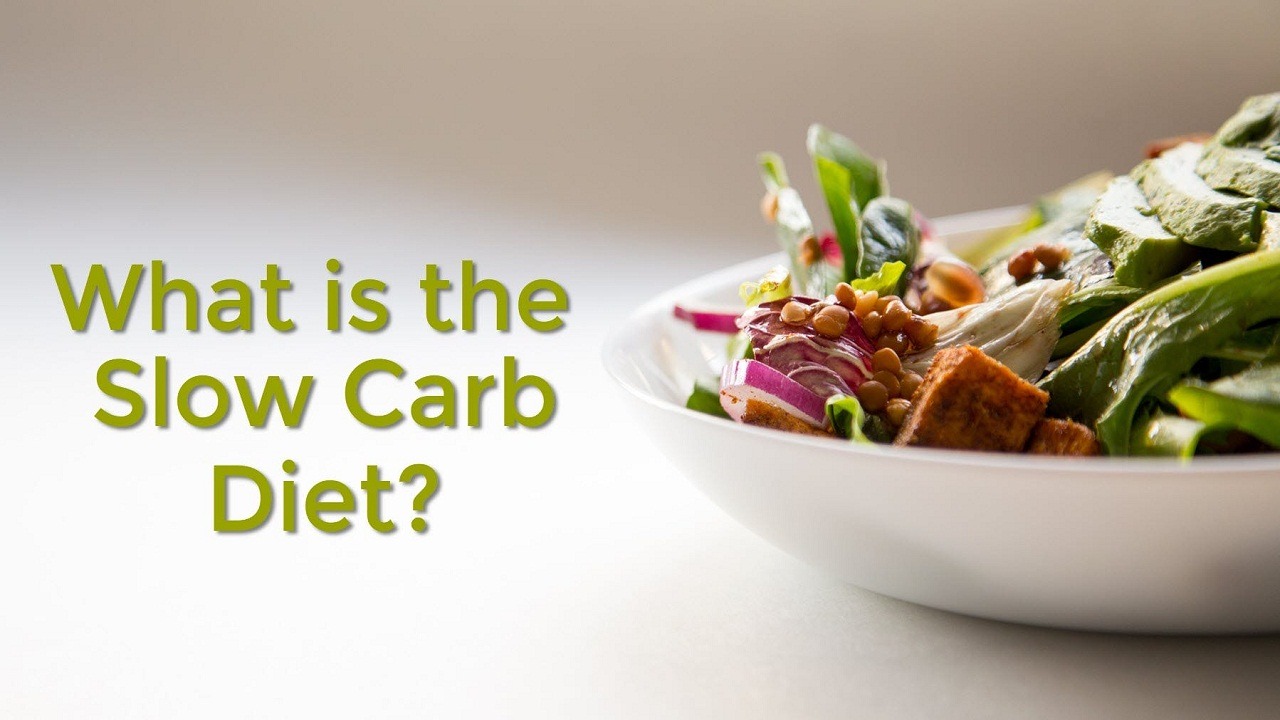What is a Slow Carb Diet
Contents
- 1 What is a Slow Carb Diet
- 2 History of the Slow Carb Diet
- 3 Slow Carb Diet Macros
- 4 Benefits of the Slow Carb Diet
- 5 1. Sustainable Weight Loss
- 6 2. Improved Blood Sugar Control
- 7 3. Simplified Rules
- 8 Downsides of the Slow Carb Diet
- 9 1. Limited Food Variety
- 10 2. Potential Nutrient Deficiency
- 11 Slow Carb Diet Details
- 12 1. Allowed Foods
- 13 2. Meal Timing
- 14 Best Foods to Eat on the Slow Carb Diet
- 15 1. Lean Proteins
- 16 2. Legumes
- 17 3. Non-Starchy Vegetables
- 18 Foods to Avoid on the Slow Carb Diet
- 19 1. Processed Carbohydrates
- 20 2. Dairy Products
- 21 3. Certain Fruits
- 22 Keys to Success on the Slow Carb Diet
- 23 1. Meal Preparation
- 24 2. Regular Exercise
- 25 Common Myths About the Slow Carb Diet
- 26 1. All Carbs Are Bad
- 27 2. No Need for Exercise
- 28 Common Mistakes on the Slow Carb Diet
- 29 1. Neglecting Micronutrients
- 30 2. Ignoring Individual Variation
- 31 Common Questions About the Slow Carb Diet
- 32 1. Can I Cheat on the Slow Carb Diet?
- 33 2. Is the Slow Carb Diet Sustainable Long-Term?
- 34 What are the 5 Rules of Slow Carb?
- 35 Slow Carb vs Keto
- 36 Conclusion
- 37 Frequently Asked Questions (FAQs)
Navigating the diverse landscape of diet trends, the Slow Carb Diet emerges as a beacon of practicality and sustainability, offering a unique approach to weight management and overall well-being. Developed by the insightful Tim Ferriss, a prolific author, and entrepreneur, the Slow Carb Diet transcends traditional calorie-centric methodologies by placing a deliberate focus on the quality of carbohydrates consumed.
Must Read: 7-Day Keto Cycle Diet for Optimal Muscle Building | Ultimate Guide
History of the Slow Carb Diet
The Slow Carb Diet finds its roots in the pages of Tim Ferriss’s “The 4-Hour Body,” published in 2010. As a pioneer in the realm of self-optimization, Ferriss delved into nutritional strategies as part of his broader exploration of human performance. The Slow Carb Diet, born out of this exploration, stands as a testament to Ferriss’s commitment to finding simple yet effective methods for achieving sustained weight loss and metabolic improvement.
Slow Carb Diet Macros
At the heart of the Slow Carb Diet are three essential macronutrients: proteins, fats, and carbohydrates. What sets this diet apart is the strategic emphasis on slow-digesting, low-glycemic index carbohydrates. This nuanced approach aims to regulate blood sugar levels and insulin responses, creating an environment conducive to fat loss while promoting a prolonged sense of fullness.
Benefits of the Slow Carb Diet

1. Sustainable Weight Loss
The Slow Carb Diet’s emphasis on slow-digesting carbohydrates fosters sustainable weight loss. By promoting a sense of satiety and reducing overall calorie intake, individuals embark on a journey that extends beyond mere short-term results.
2. Improved Blood Sugar Control
Prioritizing low-glycemic index carbohydrates not only aids in weight management but also holds the potential to reduce the risk of insulin resistance and type 2 diabetes. This facet is particularly beneficial for individuals with metabolic concerns.
3. Simplified Rules
A major advantage of the Slow Carb Diet is its simplicity. The straightforward guidelines make it accessible to a wide audience, eliminating the need for complex meal planning and intricate calculations often associated with other dietary strategies.
Downsides of the Slow Carb Diet
1. Limited Food Variety
While the Slow Carb Diet champions specific food groups, critics argue that its restrictions might lead to dietary monotony. To counter this, individuals can explore diverse recipes and creative culinary approaches, ensuring a more enjoyable and sustainable experience.
2. Potential Nutrient Deficiency
The exclusion of certain food groups raises concerns about potential nutrient deficiencies. To address this, followers should prioritize a diverse range of nutrient-dense foods and consider supplementation based on individual needs.
Slow Carb Diet Details

1. Allowed Foods
The Slow Carb Diet encourages the consumption of lean proteins such as chicken and fish, legumes, non-starchy vegetables, and certain fats. This combination ensures a well-rounded nutritional profile while adhering to the fundamental principles of the diet.
2. Meal Timing
Beyond the food choices, the diet emphasizes the importance of regular, well-timed meals. Additionally, aligning carbohydrate intake with workout sessions is suggested to optimize energy utilization and enhance fat-burning processes.
Best Foods to Eat on the Slow Carb Diet
1. Lean Proteins
Incorporating lean proteins such as chicken, turkey, lean beef, and fish provides essential amino acids for muscle maintenance and repair, supporting overall health and fitness goals.
2. Legumes
Beans and lentils, rich in fiber and slow-digesting carbohydrates, contribute not only to digestive health but also to sustained energy levels throughout the day.
3. Non-Starchy Vegetables
Leafy greens, broccoli, cauliflower, and other non-starchy vegetables offer valuable micronutrients with low-calorie density, aiding in weight management and providing a host of health benefits.
Foods to Avoid on the Slow Carb Diet

1. Processed Carbohydrates
Highly processed and refined carbohydrates, including white bread and sugary cereals, are recommended to be minimized due to their impact on blood sugar levels and potential contribution to weight gain.
2. Dairy Products
While cottage cheese is an exception, other dairy products are restricted on the Slow Carb Diet. This limitation is based on their potential to interfere with fat loss and overall diet effectiveness.
3. Certain Fruits
Fruits high in fructose, such as bananas and grapes, are limited on the Slow Carb Diet. Instead, individuals are encouraged to opt for berries and fruits with lower sugar content.
Keys to Success on the Slow Carb Diet
1. Meal Preparation
A cornerstone of success on the Slow Carb Diet is meticulous meal preparation. Planning and preparing meals in advance minimize the temptation to deviate from the plan and ensure that nutritious, compliant options are readily available.
2. Regular Exercise
While diet plays a significant role, combining the Slow Carb Diet with regular exercise amplifies its effectiveness. Physical activity not only supports overall well-being but also accelerates fat loss, aligning seamlessly with the diet’s objectives.
Common Myths About the Slow Carb Diet
1. All Carbs Are Bad
A prevailing myth surrounding the Slow Carb Diet is the misconception that all carbohydrates are detrimental. In reality, the diet recognizes the importance of slow-digesting carbs, emphasizing their role in sustained energy and overall health.
2. No Need for Exercise
Contrary to a common misconception, while diet is a significant component of the Slow Carb approach, exercise remains essential for maximizing results. Physical activity contributes to overall well-being and complements the diet’s impact on weight loss.
Common Mistakes on the Slow Carb Diet
1. Neglecting Micronutrients
Focusing solely on macronutrients may lead to nutrient gaps. Including a variety of vegetables, fruits, and supplements, if necessary, helps address potential nutrient deficiencies and ensures a more comprehensive nutritional profile.
2. Ignoring Individual Variation
One size does not fit all in the realm of the Slow Carb Diet. Individual responses to the diet can vary significantly, emphasizing the importance of paying attention to personal reactions and making necessary adjustments.
Common Questions About the Slow Carb Diet
1. Can I Cheat on the Slow Carb Diet?
Tim Ferriss himself advocates for occasional cheat days on the Slow Carb Diet. The key lies in a strategic approach to cheating, with specific guidelines to minimize the impact on progress.
2. Is the Slow Carb Diet Sustainable Long-Term?
Designed for long-term adherence, the Slow Carb Diet is not a quick fix. While some find it sustainable over the long term, others may prefer more flexibility in their dietary choices. The key is to find an approach that aligns with individual preferences and lifestyles.
What are the 5 Rules of Slow Carb?
The Slow Carb Diet is guided by five fundamental rules:
- Avoid “White” Carbohydrates: Eliminate or strictly limit white carbohydrates, such as bread, rice, and pasta, which are high on the glycemic index and can lead to rapid spikes in blood sugar.
- Eat the Same Few Meals Repeatedly: Simplify meal planning by rotating a few core meals. This not only streamlines the cooking process but also ensures adherence to the diet’s principles.
- Don’t Drink Calories: Limit calorie intake from beverages. Water, unsweetened tea, and black coffee are encouraged, while sugary drinks and high-calorie beverages should be avoided.
- Don’t Eat Fruit: While fruits are generally healthy, the Slow Carb Diet restricts high-fructose fruits. Instead, opt for low-fructose options like berries in moderation.
- Take One Day Off Per Week: Designate one day a week as a “cheat day” where you can indulge in your favorite foods. This strategic approach helps prevent feelings of deprivation and enhances long-term adherence.
Slow Carb vs Keto
In the realm of dietary approaches, the Slow Carb Diet and the Ketogenic Diet stand out as two distinctive paths toward improved health and weight management. Both share a common thread by limiting carbohydrate intake, but a closer examination reveals nuanced differences in macronutrient ratios and food choices, providing individuals with tailored options based on their unique goals and preferences.
Macronutrient Composition:
One key distinction between the Slow Carb Diet and the Ketogenic Diet lies in their macronutrient composition. The Carb Diet emphasizes a balanced intake of proteins, fats, and slow-digesting carbohydrates. This approach ensures a sustainable and diverse nutritional profile, incorporating foods like lean proteins, legumes, and non-starchy vegetables.
Conversely, the Ketogenic Diet is characterized by a high-fat, low-carbohydrate, and moderate-protein composition. By significantly reducing carbohydrate intake and increasing fat consumption, the body enters a state of ketosis, wherein it burns fat for fuel. This metabolic shift is a defining feature of the ketogenic approach.
Food Choices:
Another differentiating factor is the range of permissible foods. The Carb Diet embraces a variety of nutrient-dense options, allowing for the inclusion of lean proteins, legumes, and certain vegetables. This diversity not only enhances the nutritional quality of meals but also provides individuals with a broader array of flavors and textures.
On the other hand, the Ketogenic Diet encourages the consumption of high-fat foods such as avocados, nuts, seeds, and oils, while strictly limiting carbohydrate-rich foods, including many fruits and starchy vegetables. This selectivity aims to induce and maintain a state of ketosis, where the body efficiently burns fat for energy.
Practical Considerations:
Understanding these nuances is pivotal for individuals seeking a dietary approach aligned with their goals and lifestyles. The Slow Carb Diet’s moderate approach may be more suitable for those looking for a sustainable, long-term solution. Its flexibility, including a designated cheat day, accommodates diverse tastes and preferences without compromising progress.
Conversely, the Ketogenic Diet may appeal to those desiring rapid weight loss and metabolic adaptations. However, its strict carbohydrate limitations can be challenging for some individuals to maintain over an extended period. The initial adjustment phase, commonly known as the “keto flu,” may also pose temporary challenges for those transitioning into ketosis.
Choosing the Right Path:
Ultimately, the decision between the Slow Carb Diet and the Ketogenic Diet hinges on individual needs, preferences, and health objectives. Those seeking a more moderate and flexible approach may find the Slow Carb Diet to be a better fit, allowing room for a wider variety of foods. On the other hand, individuals with specific metabolic or weight loss goals may find the rapid fat-burning effects of the Ketogenic Diet to be appealing.
While both the Slow Carb Diet and the Ketogenic Diet share the overarching goal of limiting carbohydrate intake, their nuanced differences provide a spectrum of choices for individuals on their journey to improved health. Understanding these distinctions empowers individuals to make informed decisions based on their unique circumstances, preferences, and aspirations.
Conclusion
In conclusion, the Slow Carb Diet emerges as a pragmatic and sustainable approach to weight loss and improved metabolic health. By prioritizing the quality of carbohydrates and embracing a variety of nutrient-dense foods, followers embark on a transformative journey toward better health. The simplicity of the Slow Carb Diet, coupled with strategic choices, underscores its potential for lasting health improvements.
As with any nutritional plan, recognizing individual variations and preferences is crucial for long-term success and overall well-being. The Slow Carb Diet stands not as a restrictive set of rules but as a flexible framework that encourages mindful and purposeful eating, emphasizing the profound connection between nutrition, lifestyle, and lasting health transformations.
Frequently Asked Questions (FAQs)
What are the 5 rules of Slow Carb?
The 5 rules of the Slow Carb Diet, as outlined by Tim Ferriss in “The 4-Hour Body,” are:
- Avoid “white” carbohydrates.
- Eat the same few meals repeatedly.
- Don’t drink calories.
- Don’t eat fruit.
- Take one day off per week.
What foods are allowed on the Slow Carb Diet?
The Slow Carb Diet permits foods such as lean proteins (chicken, fish, lean beef), legumes (beans, lentils), non-starchy vegetables, and certain fats. It restricts highly processed and refined carbohydrates.
Is a Slow Carb Diet good for weight loss?
Yes, the Slow Carb Diet is designed to be effective for weight loss. By emphasizing slow-digesting carbohydrates and prioritizing whole, nutrient-dense foods, helps regulate blood sugar levels and promotes a feeling of fullness, contributing to weight loss.
What foods are slow-burning carbs?
Slow-burning carbs, also known as low-glycemic index carbohydrates, include legumes, non-starchy vegetables, and certain whole grains. These foods release glucose slowly into the bloodstream, providing sustained energy.
Is rice a slow carb?
No, rice is not considered a slow carb. It is a high-glycemic index carbohydrate, leading to a rapid spike in blood sugar levels. The Slow Carb Diet recommends avoiding such “white” carbohydrates.
Can you eat eggs on the Slow Carb Diet?
Yes, eggs are allowed on the Slow Carb Diet. They are a good source of protein and healthy fats.
Is milk allowed on the Slow Carb Diet?
The Slow Carb Diet generally restricts dairy, including milk, due to its potential impact on fat loss. However, small amounts of cottage cheese are an exception.
Why no fruit on the Slow Carb Diet?
Fruits, especially those high in fructose, are restricted on the Slow Carb Diet to manage insulin levels and encourage fat loss. However, small amounts of berries are allowed in moderation.
Is potato a slow carb?
Potatoes are not considered slow carbs. They are starchy and have a high glycemic index, leading to a rapid increase in blood sugar levels.
Are bananas slow-burning carbs?
Bananas have a moderate glycemic index and can be considered a source of slow-burning carbs when consumed in moderation.
Are bananas slow-release carbs?
Yes, bananas can be categorized as slow-release carbs due to their moderate glycemic index, providing sustained energy over time.
What is the 4-hour body rule?
The 4-Hour Body rule refers to the principles outlined by Tim Ferriss in his book “The 4-Hour Body,” which includes the 5 rules of the Slow Carb Diet, among other strategies for improving various aspects of the body, from fitness to sleep.
What does 30g of protein look like?
Approximately 30g of protein can be found in sources like a chicken breast, a serving of fish, or a cup of cooked lentils.
How to avoid carbs?
To avoid carbs, focus on whole, unprocessed foods, emphasizing lean proteins, non-starchy vegetables, and healthy fats. Limit intake of grains, sugary foods, and processed snacks.
What is the number 1 worst carb?
Refined and processed carbohydrates, especially those with added sugars, are often considered the worst carbs due to their negative impact on blood sugar levels and overall health.
What are the 5 foods that burn belly fat?
Foods that may contribute to belly fat loss include lean proteins, green tea, whole grains, fruits like berries, and vegetables rich in fiber.
Is rice high in carbs?
Yes, rice is high in carbohydrates, particularly refined white rice. Opting for whole grains like brown rice provides a slightly better nutritional profile.
How to lose belly fat?
Strategies to lose belly fat include a balanced diet, regular exercise, stress management, and adequate sleep. Targeted abdominal exercises can also contribute to toning the area.
Which carb is the healthiest?
Whole grains, such as quinoa, brown rice, and oats, are often considered healthier carbs due to their fiber content and slower impact on blood sugar levels.
What is the 5 to 1 rule for carbs?
The 5 to 1 rule suggests consuming at least 5 grams of fiber for every 15 grams of carbohydrates. This ratio supports better blood sugar control and overall health.

